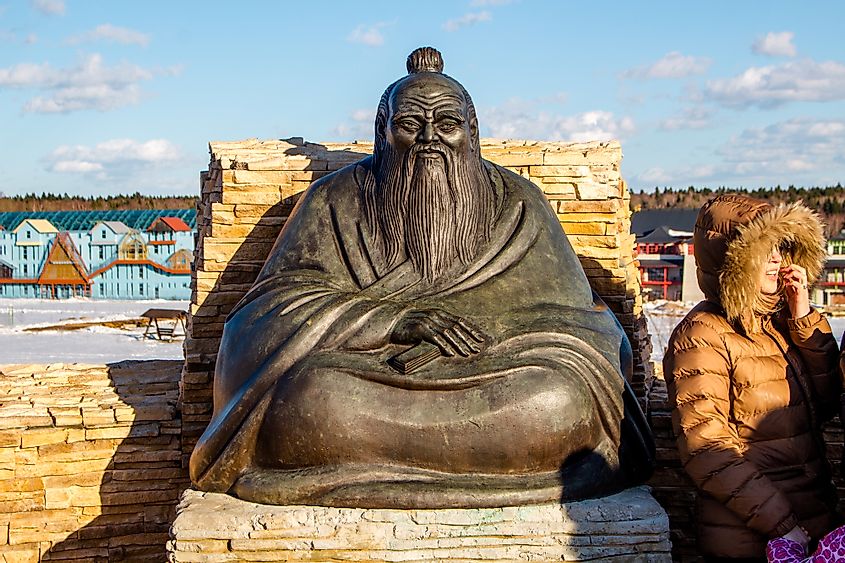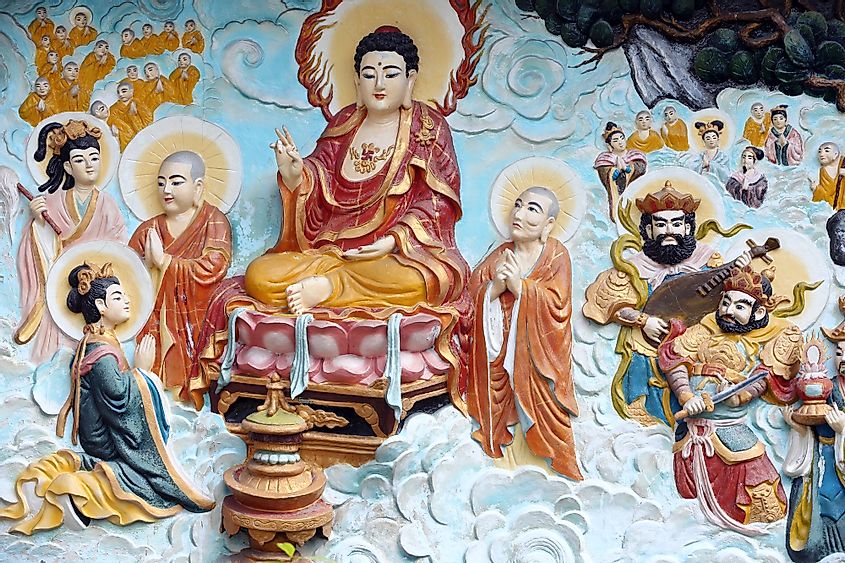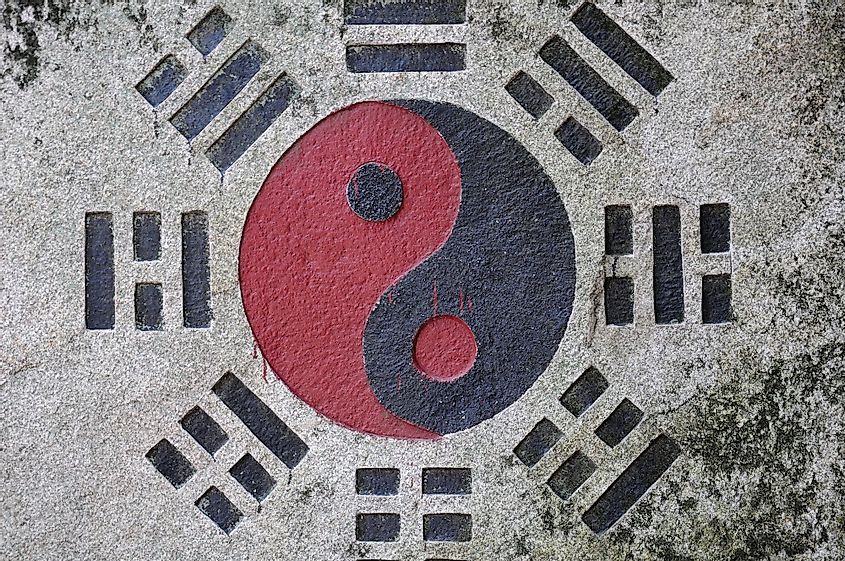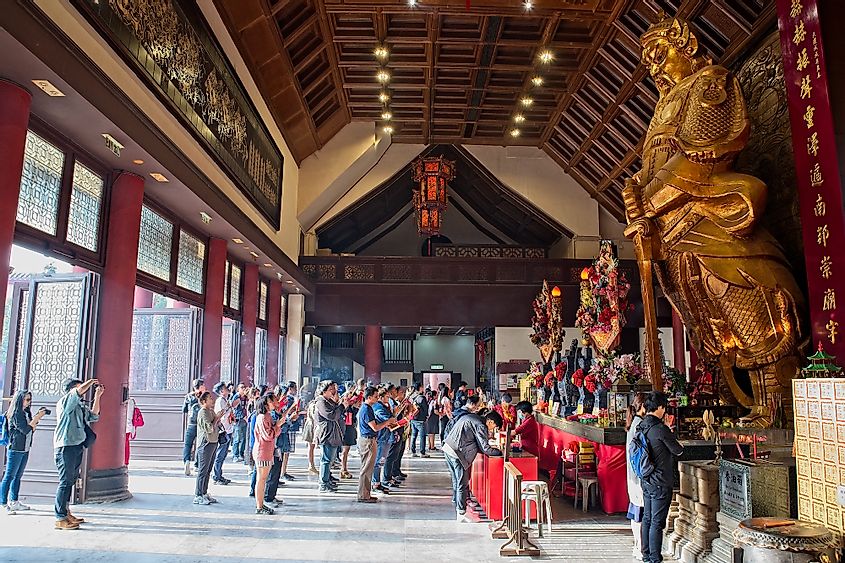
Taoism
Taoism, also called Daoism, is an ancient system of philosophical and religious beliefs practiced mostly in the Far East. The beliefs associated with Taoism date back to the 16th century BCE, though it is generally accepted that the formal tradition of what is now regarded as both a religion and a philosophy called Taoism emerged in the 5th century BCE. The founding of Taoism is largely attributed to the teachings of Lao Tzu, whose work was followed up by other notable philosophers and scholars. Taoism took on more religious connotations in the 2nd century CE, and at one point, was the official religion of China. Today, there are still millions of people, mainly in East Asia, who claim to follow the principles of Taoism.
History Of Taoism
Taoism dates back to the 5th century BCE. However, according to some experts, the religion's philosophy originated back to the time of the Shang Dynasty (1558-1102 BCE). Therefore, the Taoism that began developing in the 5th century BCE is thought to be a revival of a more ancient philosophical tradition. Indeed, Taoism began as a form of philosophy before it evolved into a religion. The founder of Taoism is said to be a person named Lao Tzu, though scholars are divided as to whether or not he was a real person or simply a myth. According to tradition, Lao Tzu was the author of the first Taoist text, the Tao Te Jing (Book of the Way).

Other philosophers carried on the teachings of Lao Tzu. One of them was Zhuang Zhou, who lived from 369 BCE to 286 BCE. He wrote another text on the philosophy of Taoism, the Zhuangzi, which is named for him (literally translates as Master Zhuang). The Zhuangzi is a compilation of Zhuang Zhou's writings and those of other writers during China's classical period (5th century to 3rd century BCE). Another important Taoist text is the Taozang, which was written during the time of the Tang Dynasty (618-907 CE) and the Sung Dynasty (960-1234 CE), though it was not compiled until the time of the Ming Dynasty (1368-1644 CE).f
Taoism evolved into a religion in the second century CE. It was not until the Tang Dynasty (618-907 CE), however, that religion would gain prominence in China. The Tang emperor, Xuanzong (ruled 712-756 CE), made Taoism the country's official religion. He even decreed that his subjects had to keep Taoist writings in their homes. However, as the Tang Dynasty began to decline, so did Taoism, losing followers to Confucianism and Buddhism. When the Communist Party took power in China in 1949, Taoism was banned. In fact, during the Cultural Revolution (1966-1976) many Taoist temples were destroyed. Those who believed in Taoism were subject to re-education, and in just ten years, the number of people who professed Taoism fell by 99%. During the 1980s, however, some Taoist temples were restored. Today, there are 25,000 Taoist priests and nuns in China and 1,500 temples.
Beliefs Of Taoism

Taoism takes its name from the term "Tao," which means "the way." Taoists believe that the Tao constitutes all living things, though it is also something to live by. Tao Te Jing supposedly teaches how to follow the Tao and live at peace with oneself, others, and the constantly changing world. Taoism preaches open-mindedness and not only accepting change but embracing it. Thus, a person who adapts to changes in their life will be happy, while those who resist change will not be. Above all, Taoism emphasizes living in harmony with nature. In fact, Taoist philosophy grew out of the observance of the natural world.
Like other Eastern religions, Taoism embraces the idea represented by the yin-yang symbol, the idea that the universe originated due to the interaction between two primordial forces known as yin and yang. Taoism teaches that life needs to have an appropriate balance of yin and yang. Ironically, however, Taoists do not believe that good and evil and life and death are associated with the yin-yang principle. The reason is that, according to the teachings of Taoism, nature does not recognize anything as being good and evil, nor does it recognize a difference between life and non-life. In fact, Taoists do not believe that there are good people or evil people. Rather, all people are inherently good and need only be shown to choose virtue over vice.

Taoism is not too dissimilar from other Eastern religions. Other than a belief in yin and yang, other elements of Taoism resemble the teachings of other religions. For example, both Taoists and Confucianists believe that when someone dies, they do not cease to exist but instead live somewhere else. In other words, both religions have a concept of the afterlife, which is consistent with many, if not most, religions around the world. There are, however, notable differences between Taoism and other Eastern religions. For instance, whereas in Buddhism, life is suffering, it is generally viewed as a happy time in Taoism. In addition, whereas Confucianism stresses the importance of ritual and regulation, Taoism discourages both as they interfere with the harmony of nature.
Taoism Today

Today, it isn't easy to ascertain how many practitioners of Taoism there are in the world because sources have different ways of defining both Taoism and adherents of Taoism. There could be as many as 173 million Taoists globally or as little as 12 million. Some ethnic minorities in China, for example, are known to practice Taoism in addition to other religions. These groups include the Mulam, Maonan, Pumi, and Gin, based in southern China. Taiwan has the second largest population of Taoists outside the Chinese mainland. In fact, up to 44% of the de facto island country's population may be Taoist. There are also large Taoist communities in Hong Kong and Singapore. The United States has the largest Taoist population outside the Far East, with over 12,000 people. Australia also has a sizeable Taoist community numbering about 4,500.







